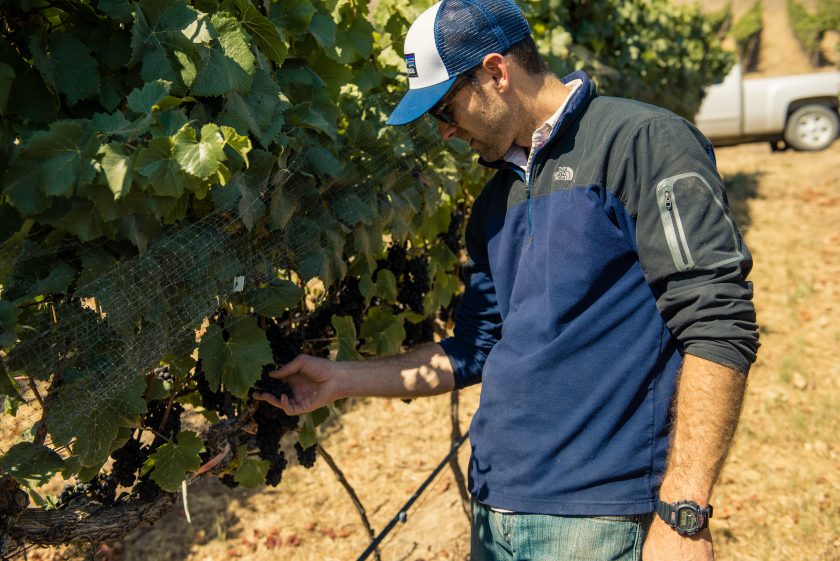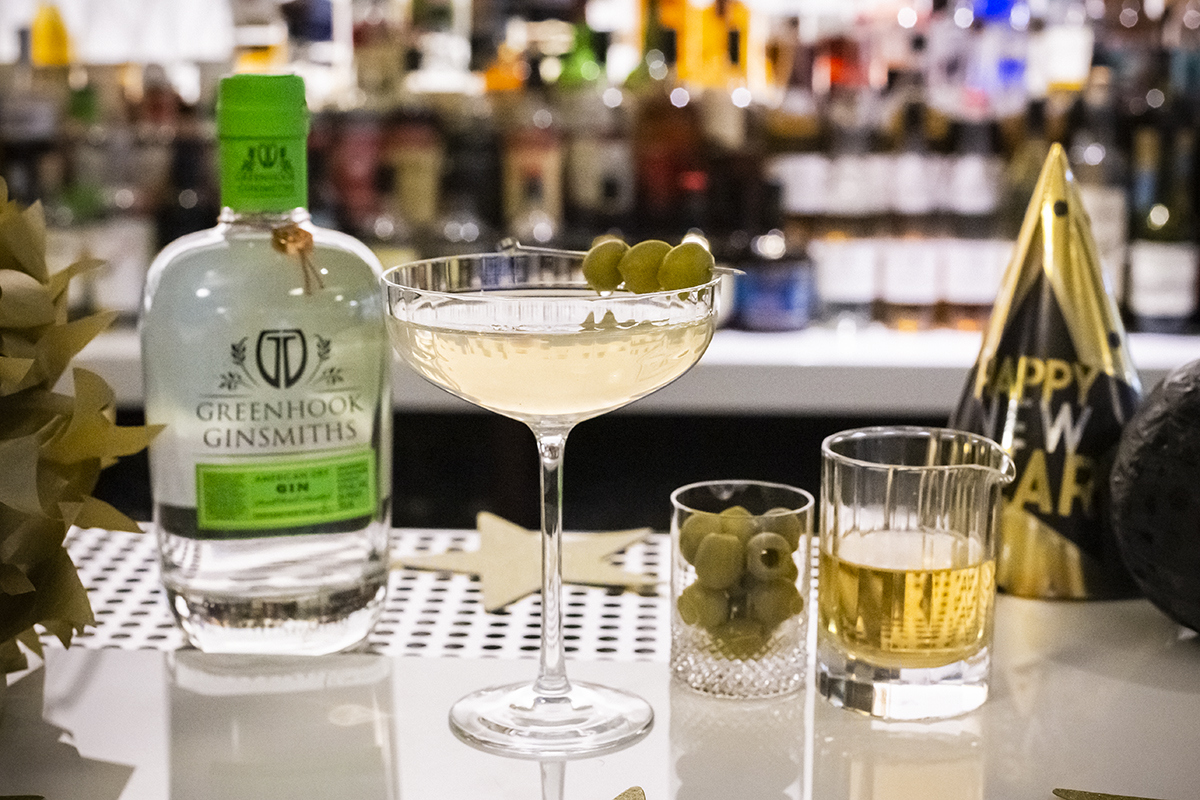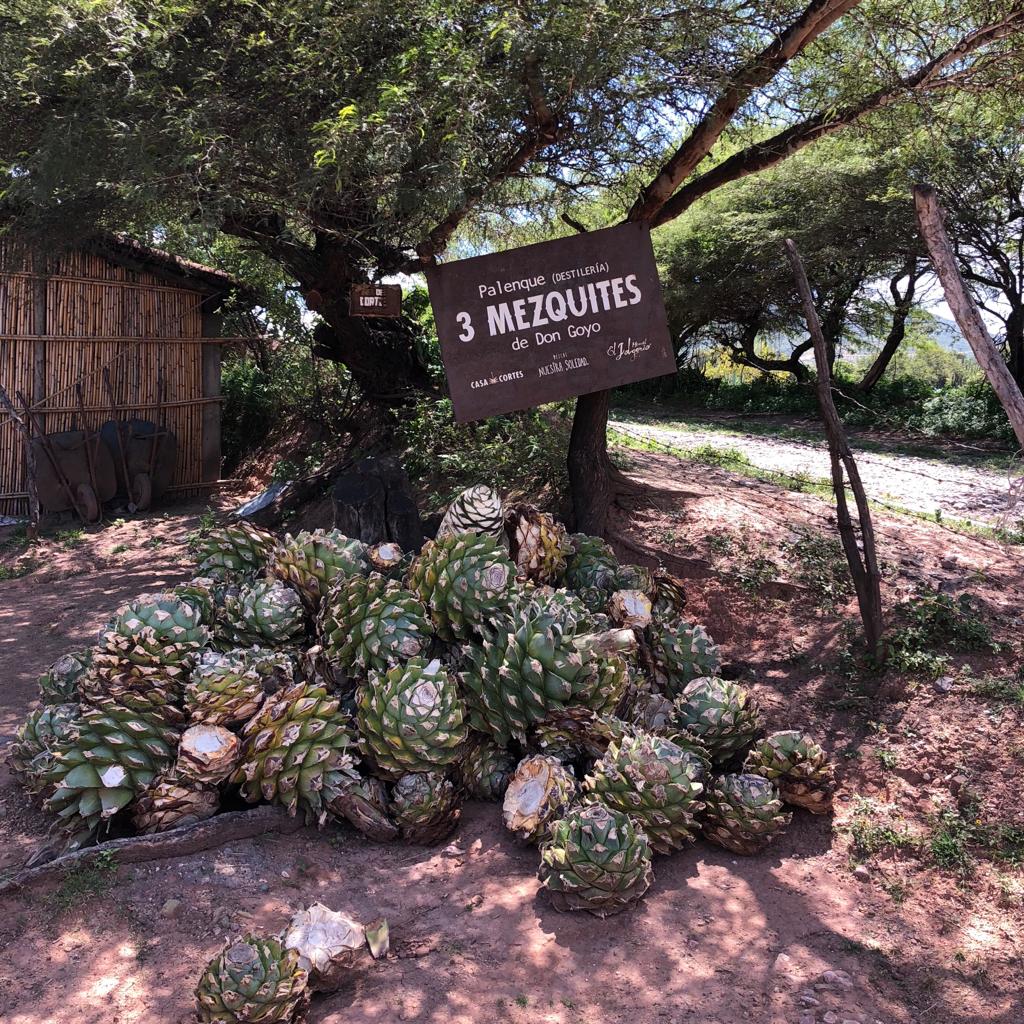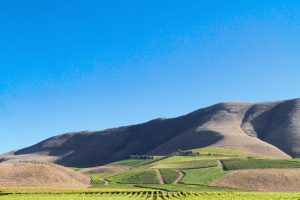
Justin Willett, owner and winemaker of Tyler Winery, just completed his 13th harvest in the Sta. Rita Hills. A recent visit by the Skurnik Wines team to Lompoc, home of the winery, reaffirmed what we thought when we first began working with Justin last year: that Tyler has firmly entered the pantheon of truly great producers of California Chardonnay and Pinot Noir. This is a winery not to miss.
A son of Santa Barbara, Justin began Tyler Winery in 2005 with a few barrels tucked away in the corner of a cellar, where he honed his approach to Chardonnay and Pinot Noir. Justin has since engaged the famed historic vineyards of Santa Barbara, including the region-defining Sanford & Benedict in the Sta. Rita Hills, and more recently Bien Nacido in the Santa Maria Valley.
Justin’s wines lead with structure and persistence; they evoke focus and vibrancy. He is a champion of Santa Barbara as a wine region, and along with a few ambitious projects he has up his sleeve, he will no doubt continue to make a name for himself in the region, and on the world stage.
Justin spoke recently with our Assistant American Portfolio Manager, Erica Skurnik, about his upbringing, inspiration, and future undertakings.
Can you talk about your upbringing in Santa Barbara, and how you got into the wine industry?
“Wine wasn’t in my family at all. My mom was a nurse and my dad was a contractor. They would come home and have a beer or a glass of wine once in a while, but wine was definitely not on the table every night. I wasn’t really aware of it at all.
I was super into golf in junior high and high school, and I thought that’s what I was going to do with my life, but then I tweaked my elbow so that was kinda that. I decided after I got hurt that I missed the beach and moved back home to Santa Barbara.
When I was back in Santa Barbara, really just being a student for the first time without sports, I started waiting tables, and that’s really where I fell into wine. I worked at a funky little restaurant by my university where we wore Hawaiian shirts and the wine list was… let’s call it mediocre. But we had to take little wine seminars to be a server there, and that’s where I first thought ‘oh, this is cool.’
After college, I moved to Los Angeles without much of a plan, but sort of fell backwards into a restaurant that was opening that happened to have a really great wine program. The night the restaurant opened, there were all these bottles lined up outside the wine room, and one of the owners, Robert, asked me to put the wine into the cellar. I remember picking up this bottle of, I think, Jobard ’95 Meursault-Genevrières, and I remember thinking ‘I can’t read any of this, I don’t know what any of this means!’ and that’s when I realized, ‘OK, I gotta learn this stuff.’
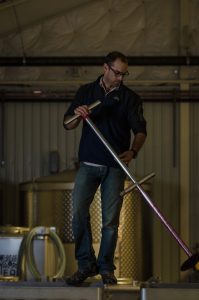 I started reading a lot, Robert let me tag along for a bunch of his tastings, and that was the start of it all. I decided to move back home, started waiting tables and bartending at night, and apprenticing at different wineries during the day, and that’s where I ended up making a few barrels in the corner in 2005, and it just kind of stuck from there.”
I started reading a lot, Robert let me tag along for a bunch of his tastings, and that was the start of it all. I decided to move back home, started waiting tables and bartending at night, and apprenticing at different wineries during the day, and that’s where I ended up making a few barrels in the corner in 2005, and it just kind of stuck from there.”
Your wines seem to be informed by those of Burgundy. Did you travel to the Old World when you were young?
“I started making wine in 2005, but I had never been to France until 2008! I was living in Santa Barbara in a house that Adam Tolmach from Ojai Vineyard owned. In that living room is where I met Raj Parr, Eric Railsback, and all these guys that have been so important in my wine upbringing. It was a great little community where everyone got together and really learned about wine. Five nights a week we were cooking and pulling corks. Graham Tatomer rented a room there, Brian McClintic rented a room there… it was the hub of the Santa Barbara wine community for a number of years.
A lot of my tasting was probably informed there, and it wasn’t until I traveled to Burgundy when I realized that they were doing things in a similar way, which just re-instilled in me that I was going the right direction. But I’ve never tried to recreate Burgundy across anything I do, I just happen to like a certain level of texture, alcohol, freshness, and acidity, and I happen to be from a place where you can do that.”
Did you have formal winemaking training?
“No. I mean, when I started working in a winery at the end of 2004, Joe [Davis], who I was working for at Arcadian, was making his wine at a co-op in Santa Maria, and there were 20+ wineries all making their wine underneath one roof. I was almost a mercenary who might get asked to help with bottling, or racking, or whatever. So, I got to see a lot of different people making wine in a lot of different ways, and very quickly I was able to distill what I thought worked and what didn’t. But no formal training. It’s really just been learning by doing, reading, traveling, and pulling a lot of corks.”
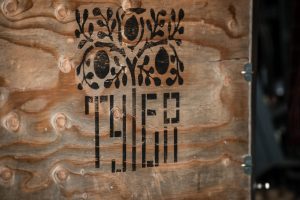 When was the Tyler brand created, and how did that come about?
When was the Tyler brand created, and how did that come about?
“In ’05 when I was making those two barrels, my one new barrel showed up at the winery and without even really thinking, I jotted ‘Tyler’ on the head of it, which is my middle name. Joe walked past and was like ‘Tyler? I like it. Easy to spell, easy to pronounce, perfect.” And it just stuck. Sadly, it’s not a better story than that. But I’ve always just liked calling things what they are.
When I started, even thinking about the logo, I was thinking about periods of art and design that I identified with. Arts and Crafts was a big thing for me, and I really liked the idea of not making more than you can make with your hands. And not relying too much on mechanization to do it.”
Is your production larger than you had ever expected it to be, or do you see Tyler continuing to grow in the future?
“We have definitely grown; initially it was a few barrels of wine, and I thought I would never make more than 500 cases – because how could you make more than 500 cases and still achieve quality at the highest level? That just proves how little I knew early in my career, because what I’ve learned is that there’s different levels where things are optimized. If I have a nice, healthy press load, I can press it more efficiently, and it’s good juices that are coming out of it. If I have a nice, healthy fermentation, an open-top that’s totally full, I can manage the temperature better which means I can extract the way I want a little bit better. There’s certainly a point where it probably gets to be too big, but I think we’re a long ways from that. Total production today for Tyler is about 10,000 cases.”
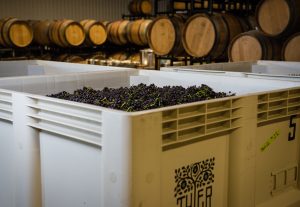 What would you say are the notable characteristics in your wines that make them “Tyler wines”?
What would you say are the notable characteristics in your wines that make them “Tyler wines”?
“As far as what I’m trying to accomplish in Chardonnay, I just want things to be crisp and clean and mineral. I think the environment here really lends itself to that style of wine. It’s unique to be able to get things ripe, yet still have these low pHs and high acidity.
In the reds, I just want them to be really pure. I want them to be really pleasant upon release but crafted in a way that they’re going to benefit from some time. Whether that means moving to a different level of flavor or texture, or be inherently durable, to give the consumer the opportunity to feel like it’s more of an asset than a liability in their cellar.”
You just made a major investment into a property around your house – are you planning to purchase any more land, or do you enjoy the aspect of picking and choosing?
“Early on when I started making wine, land was super hard to come by, but in the late 2000s you saw a lot of planting in Santa Barbara, so there have been more choices.
I was able to get into a lot of really great contracts when I started out that allowed me to not just buy fruit, but be able to say ‘hey, I’d like to prune this way, plow this way, not spray herbicides,’ etc. It’s not like I’m the one on the tractor farming it every day, but I’m able to dictate how a lot of the steps are being made, which is relatively unique. Some people think ‘oh, you buy fruit, so it’s not farmed well.’ But no, you can lease acres down here and really have a collaborative relationship and impact on the cultivation process. What was buying fruit when I started has come to the point where I have a really firm handle on how we’re doing what we’re doing.
2019 will be the first real commercial crop from my estate, and I think we’ll probably try to acquire more things in time, but I’m never going to stop working with, let’s say, Sanford & Benedict, as long as the ownership there will have me. Just because I happen to own vineyard land doesn’t mean it’s more important just because it’s mine.”
I understand you have multiple side projects in the works?
Yes, Tyler originally gave me the opportunity to really focus on Pinot Noir and Chardonnay and try to explore different terroirs and improve my understanding on what’s possible in Santa Barbara. I get even more excited now about what is possible here, because I’m now really able to understand this place. With Lieu Dit, I get to go really broad with this whole other set of [Loire Valley] grape varieties. I thought this set of varieties could be super cool here – the soils, the climate, I think it would work. 2011 was the first real year of that project.
And what about your newest project with Étienne De Montille?
Yes, it will be called De Montille-Willett. In 2012, Raj [Parr] was here in the cellar with me tasting through my 2011s, and he set his glass down, wrote Étienne [De Montille] an email telling him he must come to Tyler and taste. A few weeks later, Étienne shows up with Jim Clendenen, and we start tasting through. Étienne said to me, ‘just so you know, I really don’t care for California wine all that much,’ but then after tasting a few Chardonnays he just blossomed – he was inquisitive, very complimentary, we ended up having dinner that night and he wrote me a long email afterwards asking to keep in touch.
A few years later, Étienne and his Chef de Cave Brian were debating whether to acquire some more ground in Burgundy but thought it would be more fun to go do something elsewhere. They approached me about collaborating and asked if I would be interested, and I said ‘yes, but don’t come here because we have a relationship; come here because this is where you think you should do it.’ So they came and hung out for almost a month and did a tour from Santa Barbara, through Santa Cruz, and Sonoma, and up to the Willamette, and after a lot of tastings and visits, they came back and said ‘hey, we’d like to do this with you.’
We now have a few parcels that we leased on a super long-term basis, some parcels within some more historic vineyards like Sanford & Benedict, and actually our first property that we’re purchasing is in escrow right now. The first release will be in the fall of 2019.
And you’re making a sparkling wine too?
Étienne is also a really good buddy with Rodolphe Péters (of Pierre Peters in Champagne). When Rodolphe came to Santa Barbara, we tasted through the Wenzlau sparkling wines that I had helped make, and between those and trying the still wines, Rodolphe was super intrigued. So last year, we started a [sparkling] project based squarely around Chardonnay. We’ll crown cap the first vintage a little bit later this coming spring, before it spends a few years on its side. So, we’re still a few years off. ”
The future is clearly very bright for you, and we are thrilled to be along for the ride. Are there any other projects up your sleeve that we should know about?
I’m having a baby in February, so that’s my only new project for 2019!
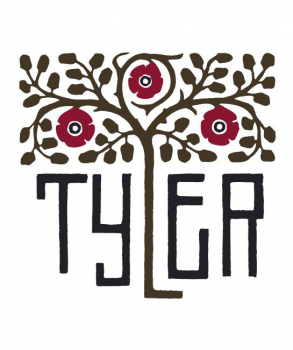
Chardonnay ‘Santa Barbara County’, Tyler
- Sourced from Bien Nacido (1973), Dierberg (1990), La Rinconada (1996), and Sanford & Benedict (1971)
- Planted on shaly loam, sandy loam, shaly clay
- Harvested 8/19 – 8/23; 2.5-4 tons/acre
- Whole cluster pressed to tank, settled overnight. Racked to another tank to begin fermentation
- Once active, barreled down, mostly old, neutral oak. No battonage.
- Raised in barrel for about 10 months, then racked to tank for additional time before bottling
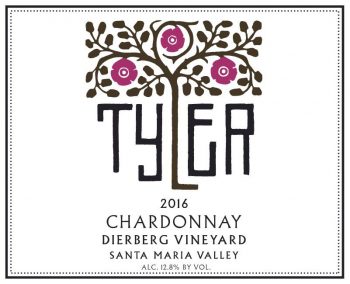
Chardonnay ‘Dierberg Vineyard’, Tyler
- Planted in 1997 on Garey Series loam
- Whole-cluster pressed to tank, settled briefly before racking to fermentation tank
- After native fermentation is active, moved to barrels and puncheons (15% new) to complete fermentation.
- No battonage, full malolactic fermentation
- Raised on lees for 10 months before returning to tank for additional elevage
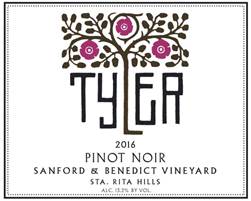
Chardonnay ‘Sanford & Benedict Vineyard’, Tyler
- Own-rooted vines planted in 1971 over chert, shale & clay soils
- Combination of old vines, cool ocean air, fog and marine soil creates a wine of great complexity
- Whole cluster pressed to tank, settled before moved to another tank
- Aged in barrels and puncheons with no more than 15% new oak
- Left on lees for 10 months before going back to tank for an additional 5 months of aging
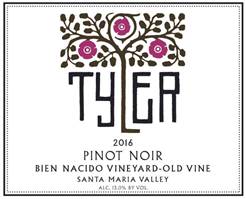
Pinot Noir ‘Bien Nacido Vineyard – Old Vine’, Tyler
- Sourced from the three best blocks of the original Bien Nacido plantings dating back to 1973
- Each parcel is crafted separately and only blended just before bottling
- Destemmed to 2-5 ton open top fermenters
- Gently extracted using punch downs and pumpovers
- Aged on the lees for 12-14 months in barrel (50% new), racked and blended, back to barrel for another 3-4 months before bottling
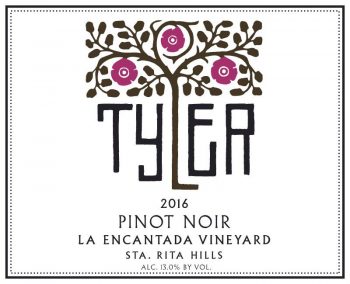
Pinot Noir ‘La Encantada Vineyard’, Tyler
- Planted in 2000 on deep clay loam over shale
- Destemmed to 2-5 ton open-top fermenters. Native fermentation begins after 4-5 days.
- Gently extracted using punch down and pumpovers.
- Pressed to tank and quickly settled before barreling down to 30% new French oak
- Raised for 12-14 months, racked and blended, then returned to barrel for a few months before bottling
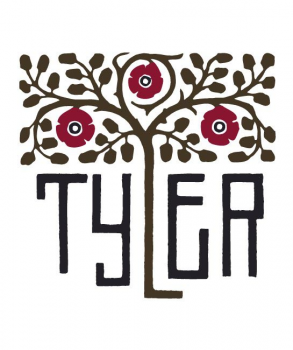
Pinot Noir ‘Santa Barbara County’, Tyler
- Sourced from Bien Nacido (1973), Dierberg Drum Canyon Vineyard (1999)
- Planted on loam, sandy loam
- Harvested 8/15-9/7; yields of 2-3 tons/acre
- Mostly destemmed to various size open-top fermenters; native fermented.
- Macerated on skins for two weeks before being pressed to tank, and then down to almost all natural barrels
- Racked after 12 months to tank and bottled, unfined, unfiltered.




